Let me start by saying my husband requested that I make this recipe over my usual chicken pasta recipe that I’ve been making for 10 years!! I was appalled. But honestly I can’t even blame him. This creamy Chicken Spaghetti recipe is a pasta lover’s dream. Tender chicken breast and spaghetti pasta are coated with a luscious cream sauce, then baked to perfection with extra cheese on top! And this casserole is made with simple pantry and refrigerated ingredients. I don’t know about you but I always seem to have a box of spaghetti noodles hanging out in my cabinet. If you do need to make a quick store run, make sure you grab two of whatever item you need, because trust me you’ll want to add this one to your weekly dinner rotation!
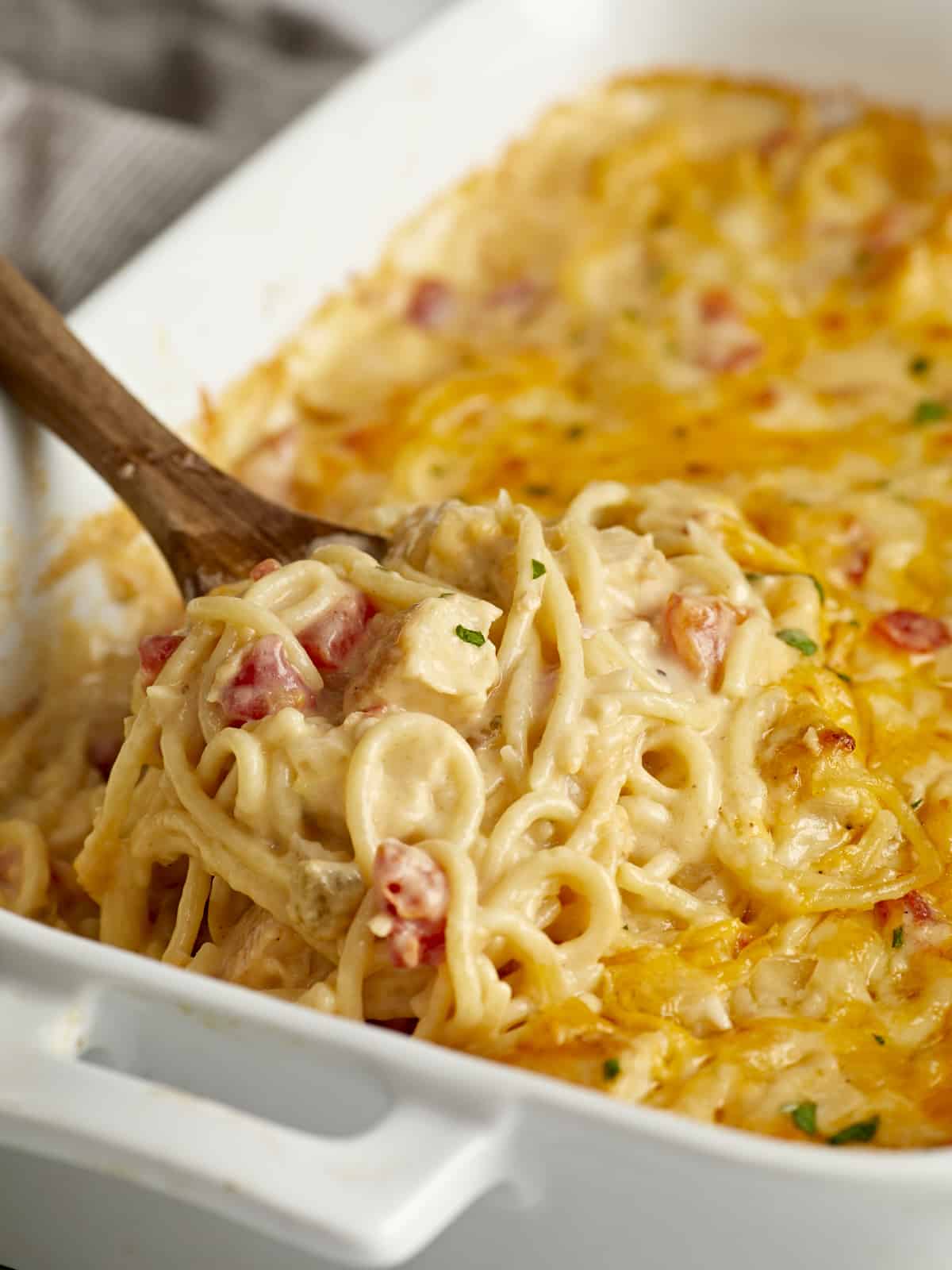
What Is Chicken Spaghetti?
When you read the words “Chicken Spaghetti” I’m sure you were thinking how on earth do those two foods go together? Well friend, let me ease your mind. This is not the traditional spaghetti sauce recipe that you’re probably familiar with. Chicken spaghetti is made with a creamy, cheesy, super flavorful cream sauce that coats tender chicken and spaghetti noodles. Tangy Rotel tomatoes are also added to give it an extra pop of flavor and to balance the creaminess of the dish. The mixture is then placed in a casserole dish and baked until it’s gooey and bubbly around the sides. Great, now I’m sitting here drooling just thinking about it again!
Ingredients For Chicken Spaghetti
Whenever it’s possible I like to keep things pretty simple, so you may already have everything you need to make this chicken spaghetti recipe. Here’s a list of ingredients you’ll need:
- Chicken: I opted for two boneless skinless chicken breasts. But if your budget is tight, you can certainly use boneless skinless chicken thighs instead.
- Aromatics: Onion and garlic are sautéed in butter to give the casserole a wonderful base layer of flavor.
- Butter & Flour: Butter is used to sauté the onion and garlic. All-purpose flour then mixes with the butter to create a simple roux, which thickens the creamy sauce.
- Chicken Broth: Chicken broth combines with the roux to create a rich and thick sauce. And we always recommend using a good quality chicken broth because it adds a lot of flavor to your dish. We use Better than Bouillon to make our broth.
- Seasoning: A simple mix of Italian seasoning, salt, and pepper is all you’ll need!
- Cheddar & Mozzarella Cheese: A combination of cheddar cheese and mozzarella cheese adds depth of flavor to the casserole and makes it extra rich and cheesy! And yes I do recommend using both types of cheeses. We first tested this recipe using just cheddar cheese, but adding some mozzarella cheese with it really boosted the level of flavor!
- Heavy Cream: Heavy cream adds even more richness to the dish and gives the sauce a wonderful creamy texture.
- Rotel: A can of Rotel tomatoes with green chiles adds a LOT of flavor to the cream sauce and makes this chicken casserole absolutely delish! So don’t skip it!
Serving Suggestions
Serve this chicken casserole with some crusty bread or try our Homemade Garlic Bread. It would also pair well with a simple side salad to keep dinner simple and easy. With that being said, me and my family totally enjoyed this dish by itself…no extra sides needed for us!😉
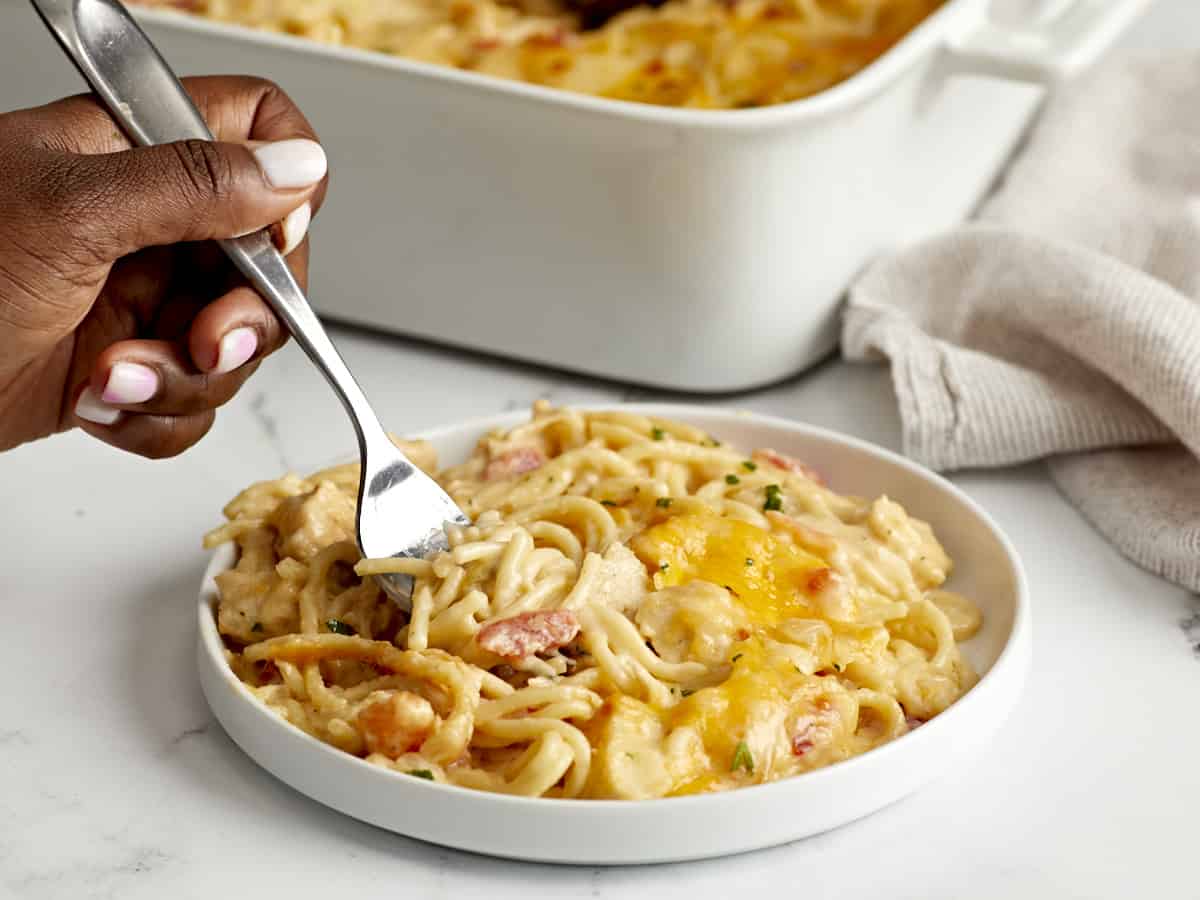

Chicken Spaghetti
Ingredients
- 2 boneless, skinless chicken breasts (about 1.5 lb total) $4.70
- 1 Tbsp olive oil $0.12
- 1/2 Tbsp salt (for the pasta water) $0.04
- 8 oz spaghetti $0.62
- 1/4 cup salted butter $0.52
- 1 onion, diced $0.32
- 2 cloves garlic, minced $0.16
- 1/4 cup all-purpose flour $0.06
- 2 cups chicken broth $0.34
- 1/2 tsp salt $0.02
- 1/4 tsp freshly cracked black pepper $0.02
- 1/2 tsp Italian seasoning $0.05
- 1 cup shredded cheddar cheese, divided $1.24
- 1 cup shredded mozzarella cheese, divided $1.24
- 1 cup heavy cream $1.36
- 1 10oz. can diced tomatoes with green chiles, drained (Rotel) $1.00
Instructions
- Preheat the oven to 375°F. Using a sharp knife, carefully fillet each chicken breast into two thinner cutlets. Heat a large deep skillet over medium heat and add the olive oil. Add the four chicken cutlets to the skillet and cook on each side until golden brown and cooked through (about 7-10 minutes total). Remove the chicken to a clean cutting board, and allow it to rest.
- While the chicken is cooking, bring a large pot of water to a boil over high heat. Add 1/2 Tbsp of salt to the water then add the spaghetti pasta and boil until the pasta is tender (or al dente). Drain the pasta in a colander.
- While the pasta is cooking, start making the sauce. In the same skillet that the chicken was cooked in, heat the butter over medium-high heat. Add the diced onion and minced garlic. Sauté for 3-4 minutes or until onion is translucent.
- Sprinkle the flour into the skillet and stir with the onion and garlic. Cook for 2-3 minutes, stirring occasionally, until flour starts to turn golden brown.
- Slowly pour the chicken broth into the skillet and stir to fully dissolve the flour from the bottom of the skillet. The flour will start to thicken the sauce when it returns to a simmer. Add 1/2 tsp of salt, black pepper, Italian seasoning, 1/2 cup cheddar cheese, 1/2 cup mozzarella cheese, and the heavy cream to the skillet. Stir until the cheese is melted and the sauce is smooth.
- After the chicken breasts have rested, chop them into smaller ½ inch pieces.
- Turn the heat off the skillet and add the drained diced tomatoes with green chiles, the chopped chicken, and the cooked spaghetti to the pan. Mix until combined.
- Add the chicken spaghetti mixture to a 9×13” casserole dish. Top with the remaining 1/2 cup of cheddar cheese and 1/2 cup of mozzarella cheese.
- Bake the casserole in the preheated oven for 25 minutes or until bubbly around the edges and cheese is melted.
See how we calculate recipe costs here.
Nutrition
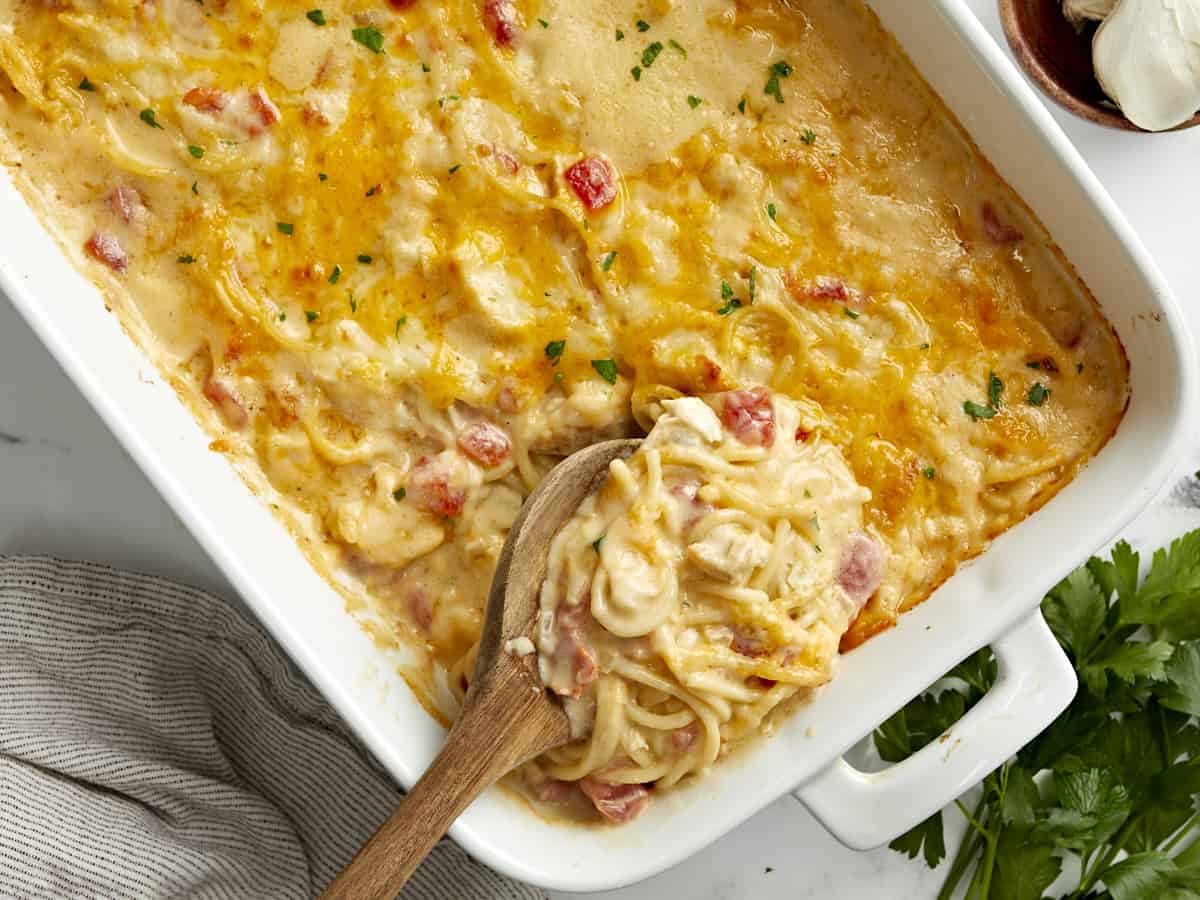
How to Make Chicken Spaghetti – Step by Step Photos
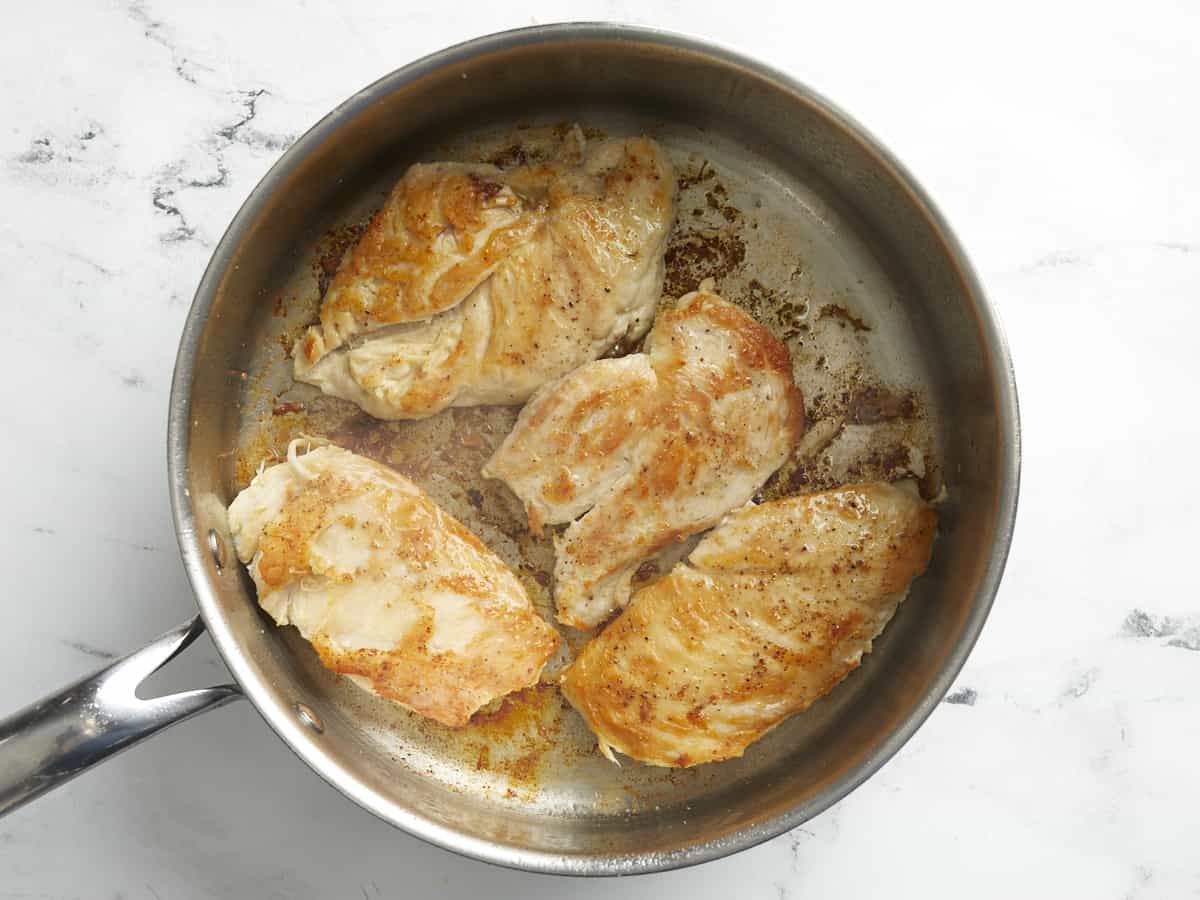
Preheat the oven to 375°F. Using a sharp knife, carefully fillet each chicken breast into two thinner cutlets. Here is a great tutorial on How to Cut Chicken Breasts Into Cutlets by Serious Eats. Heat a large deep skillet over medium heat and add 1 Tbsp olive oil. Add the four chicken cutlets to the skillet and cook on each side until golden brown and cooked through (about 7-10 minutes total). Remove the chicken to a clean cutting board, and allow it to rest.
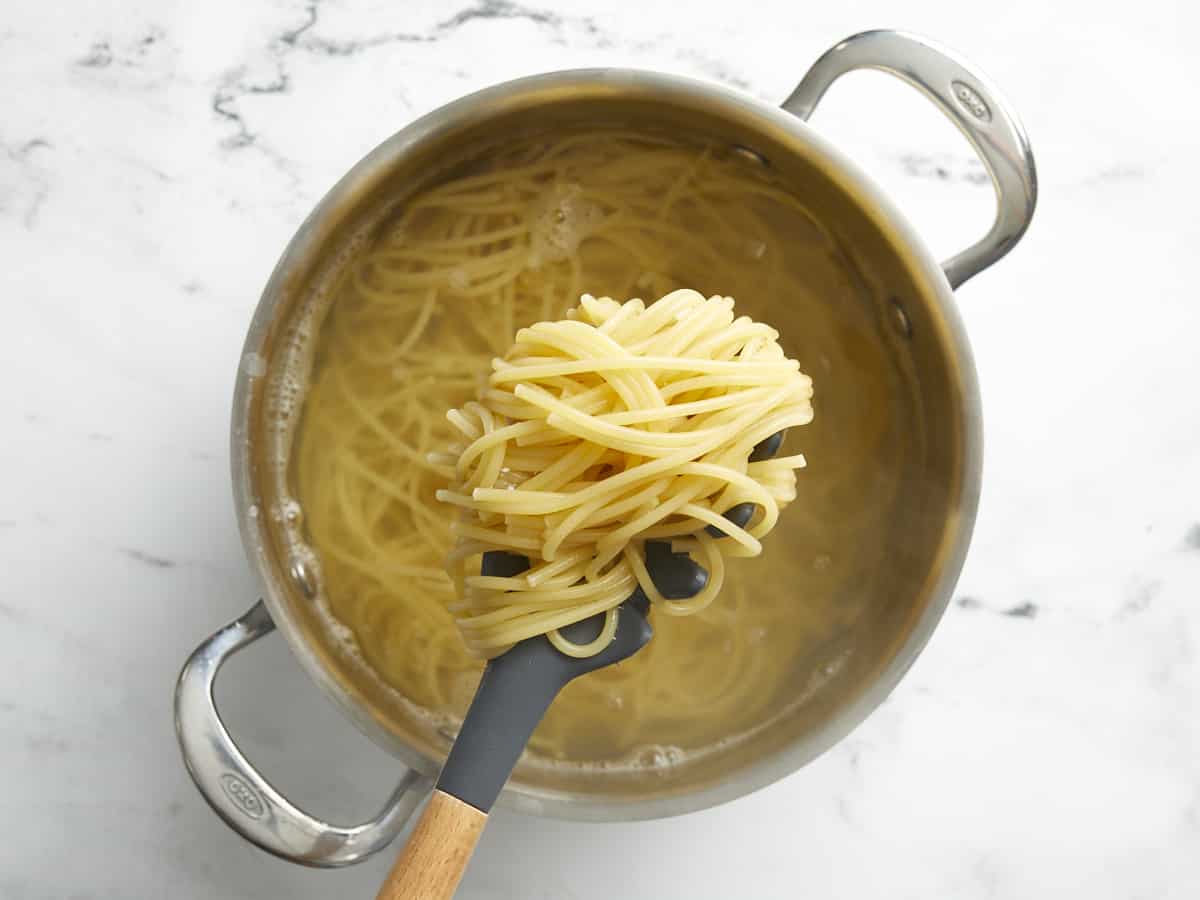
While the chicken is cooking, bring a large pot of water to a boil over high heat. Add 1/2 Tbsp of salt to the water, then add 8 oz. of spaghetti pasta, and boil until the pasta is tender (or al dente). Drain the pasta in a colander.
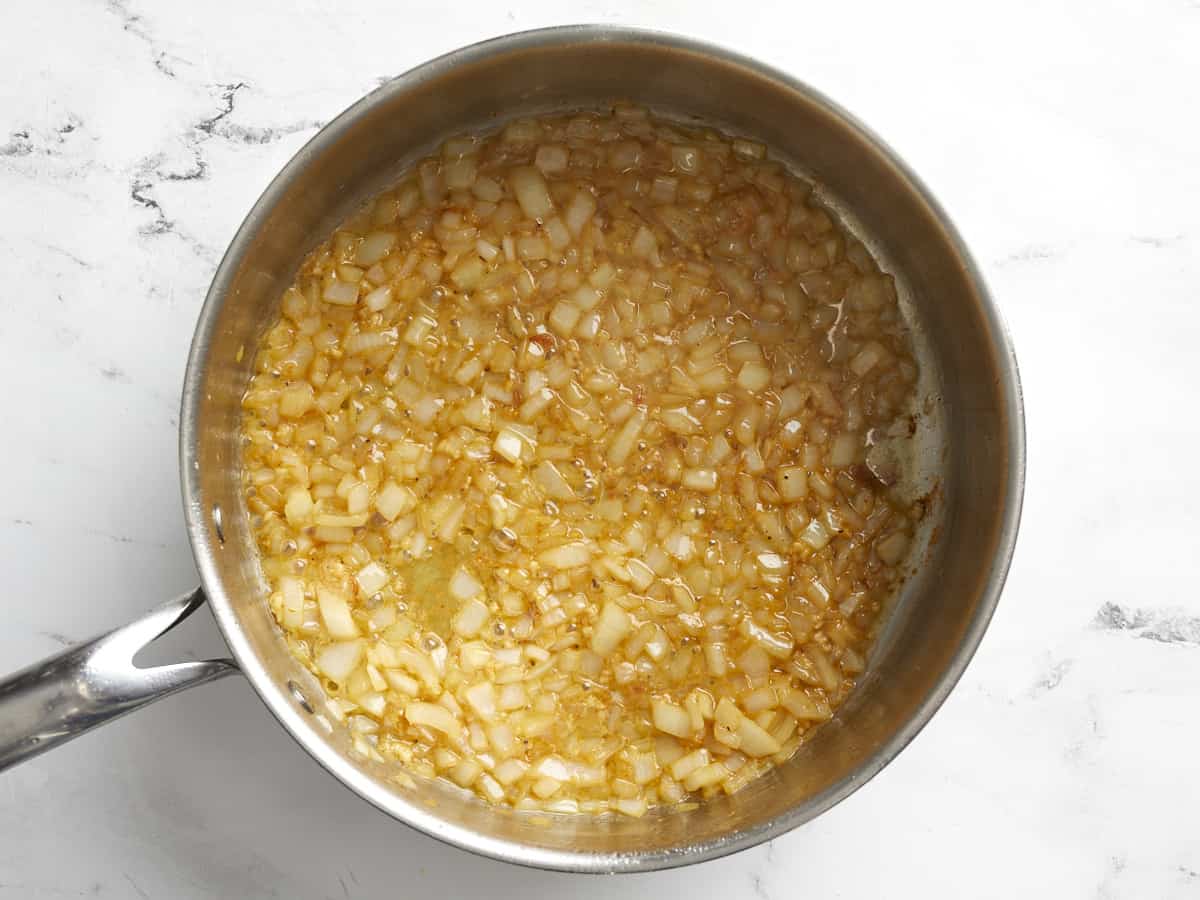
While the pasta is cooking, start making the sauce. In the same skillet that the chicken was cooked in, heat 1/4 cup salted butter over medium-high heat. Add 1 diced onion and 2 minced garlic cloves. Sauté for 3-4 minutes or until onion is translucent.
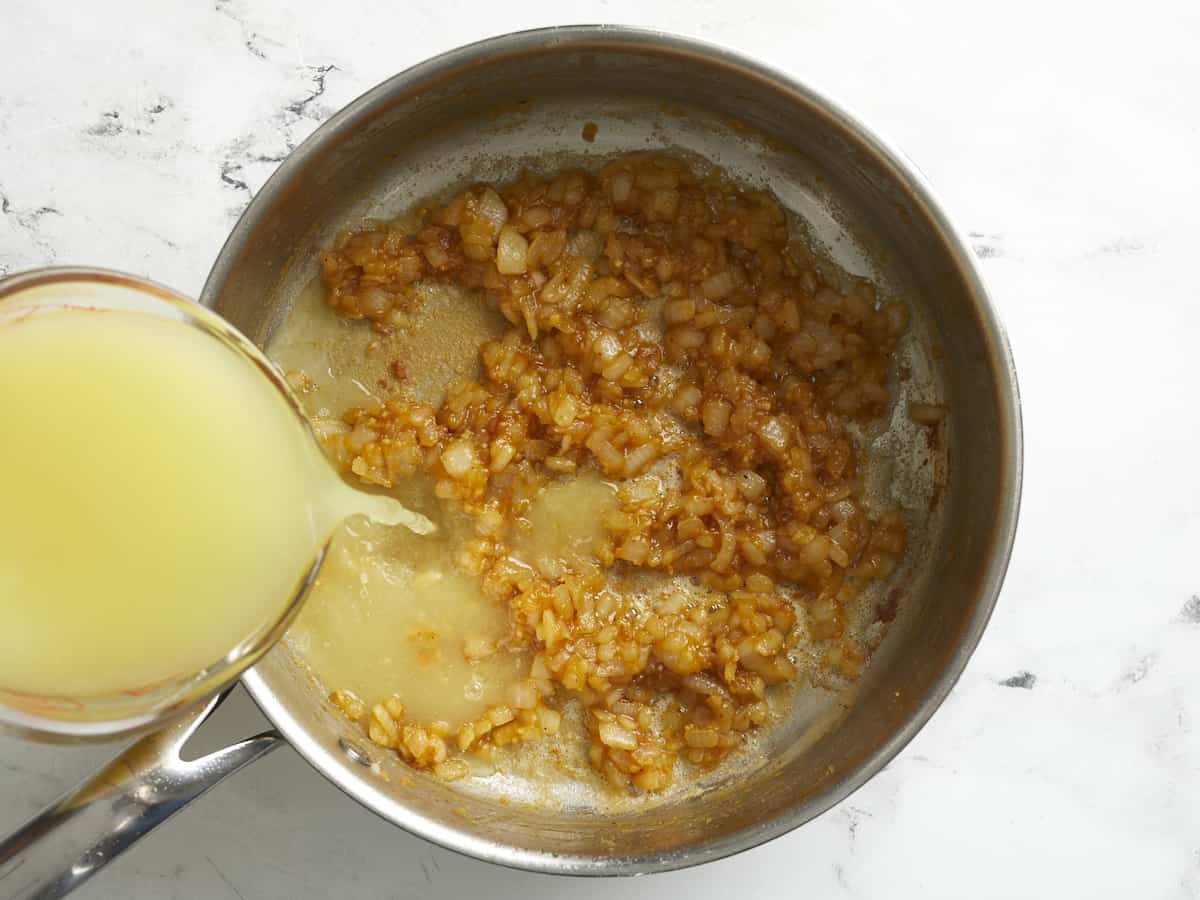
Sprinkle 1/4 cup of flour into the skillet and stir with the onion and garlic. Cook for 2-3 minutes, stirring occasionally, until flour starts to turn golden brown. Slowly pour 2 cups of chicken broth into the skillet and stir to fully dissolve the flour from the bottom of the skillet. The flour will start to thicken the sauce when it returns to a simmer.
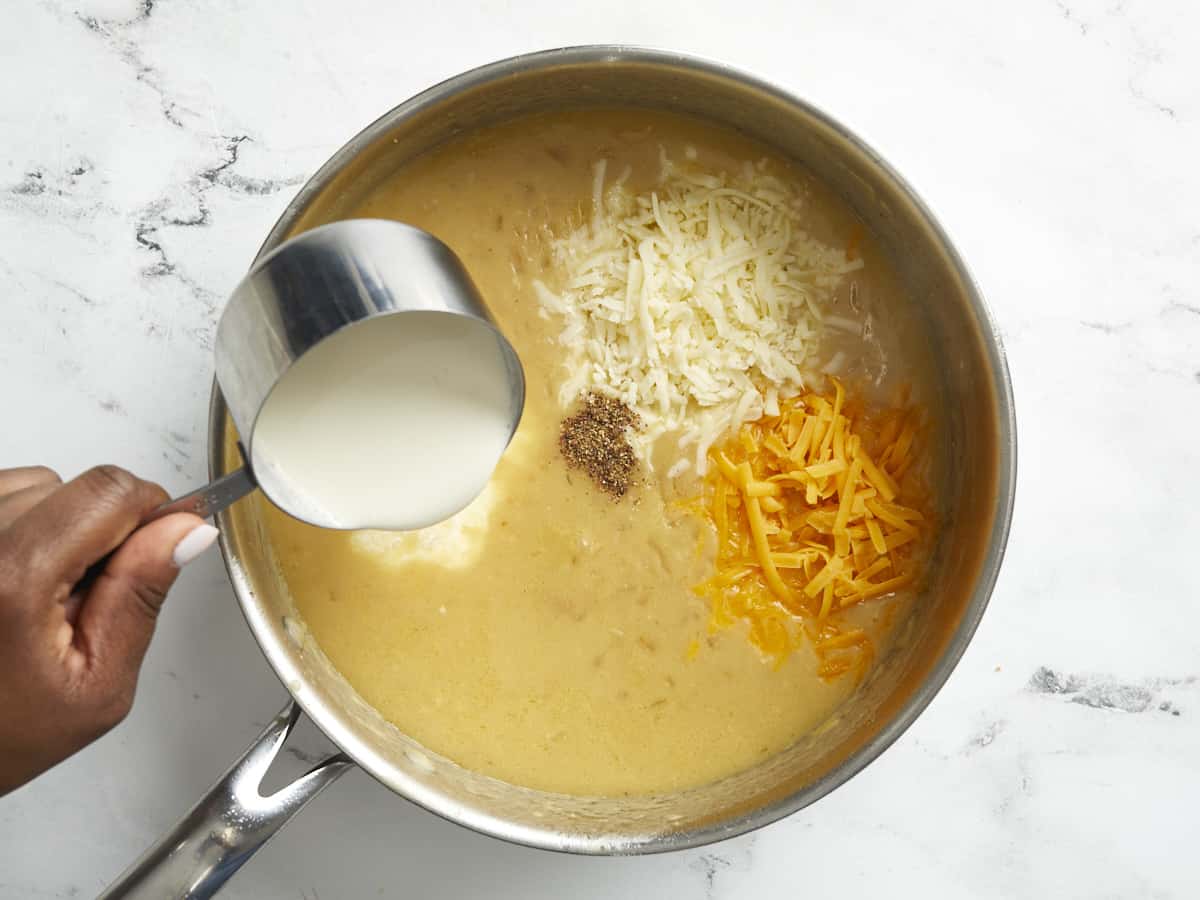
Add 1/2 tsp salt, 1/4 tsp black pepper, 1/2 tsp Italian seasoning, 1/2 cup cheddar cheese, 1/2 cup mozzarella cheese, and 1 cup of heavy cream to the skillet. Stir until the cheese is melted and the sauce is smooth.
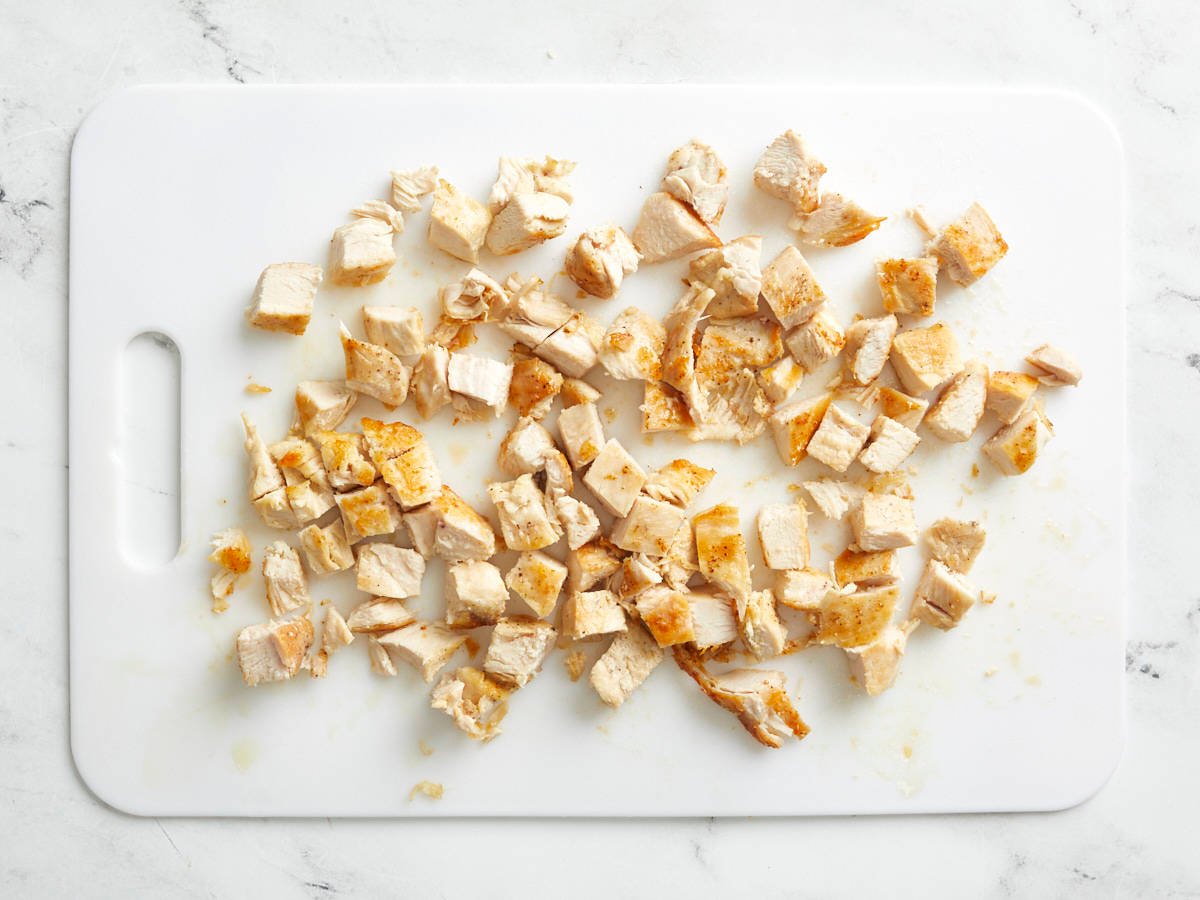
Now chop the cooked chicken breasts into smaller ½ inch pieces.

Turn the heat off the skillet and add 1 can of drained diced tomatoes with green chiles, the chopped chicken, and the cooked spaghetti to the pan. Mix until combined.
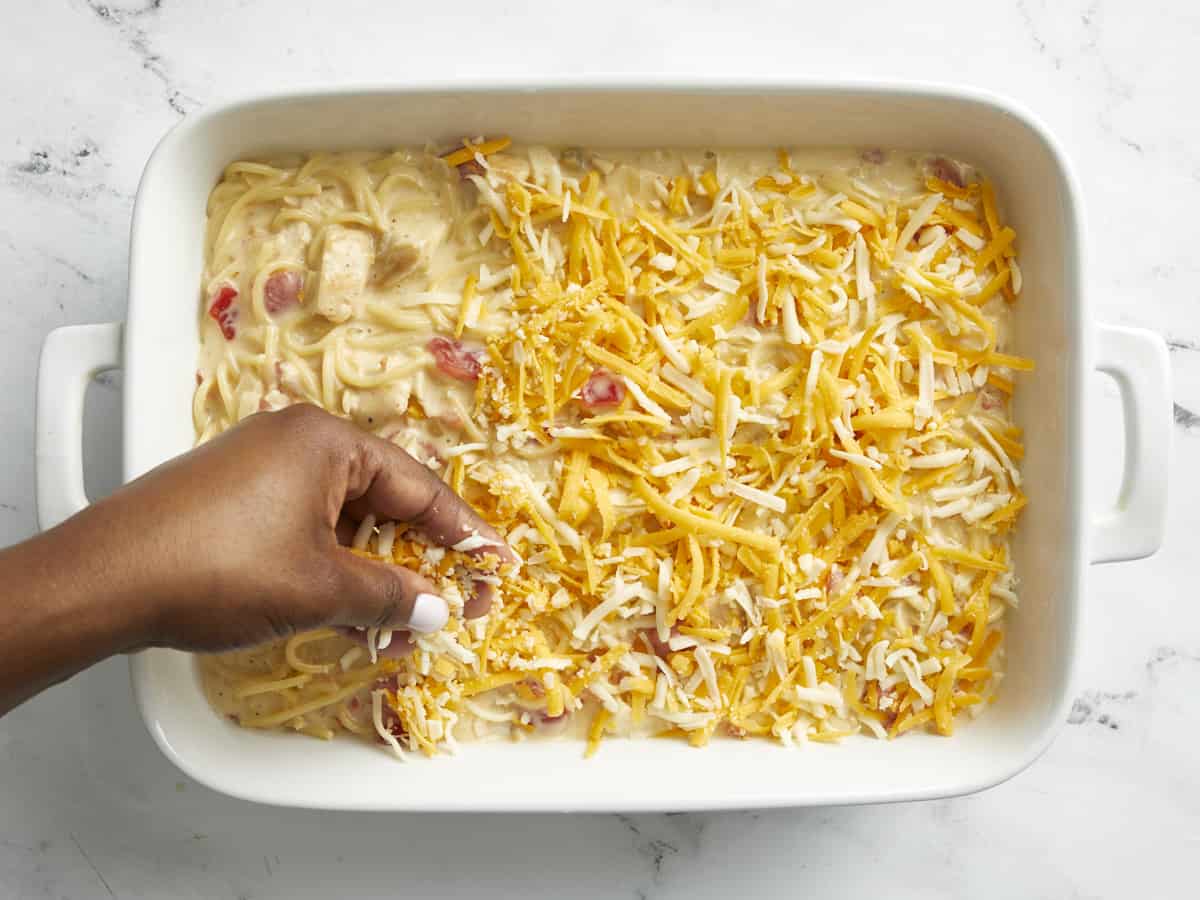
Add the chicken spaghetti mixture to a 9×13” casserole dish. Top with the remaining 1/2 cup of cheddar cheese and 1/2 cup of mozzarella cheese.
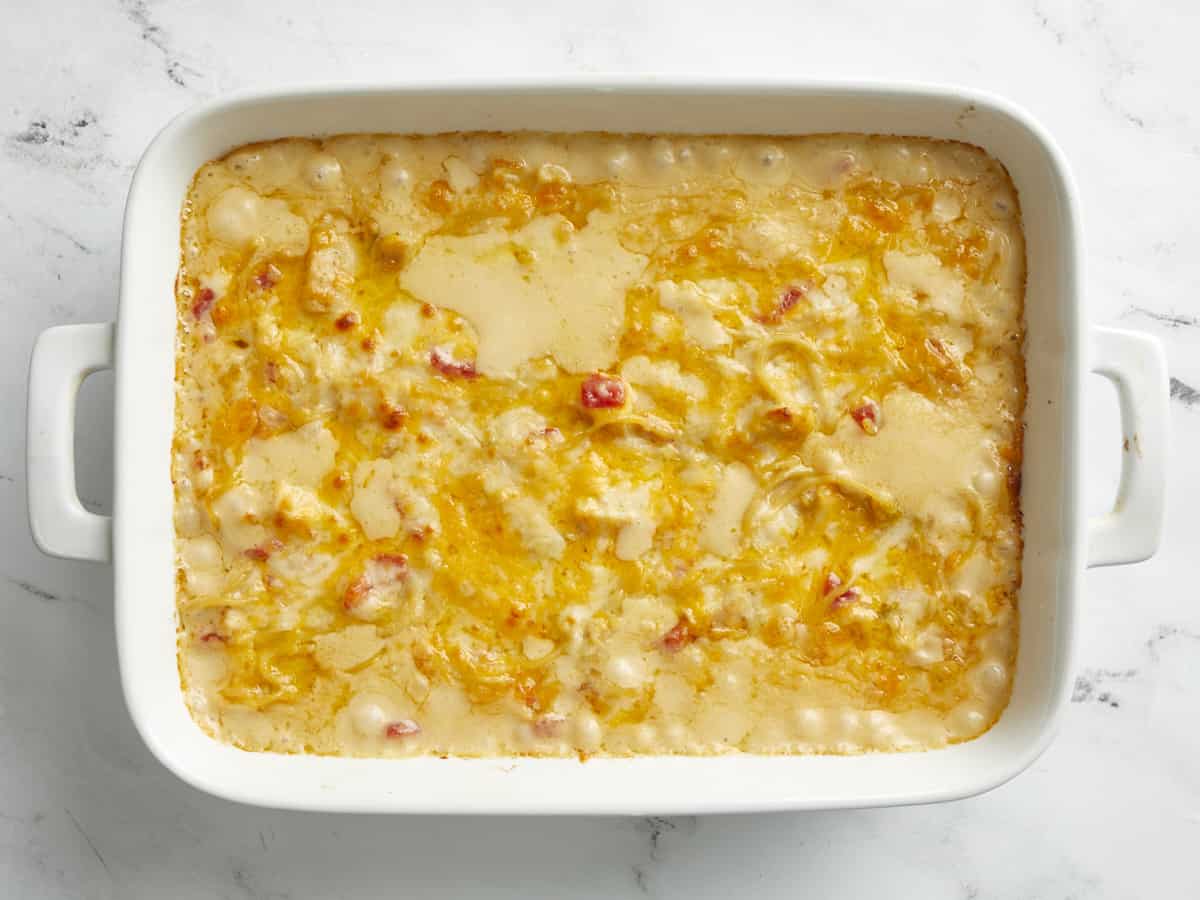
Bake the casserole in the preheated oven for 25 minutes or until bubbly around the edges and the cheese is melted on top.

This Chicken Spaghetti casserole is so creamy and delicious, it’ll soon become one of your favorite recipes! Enjoy!
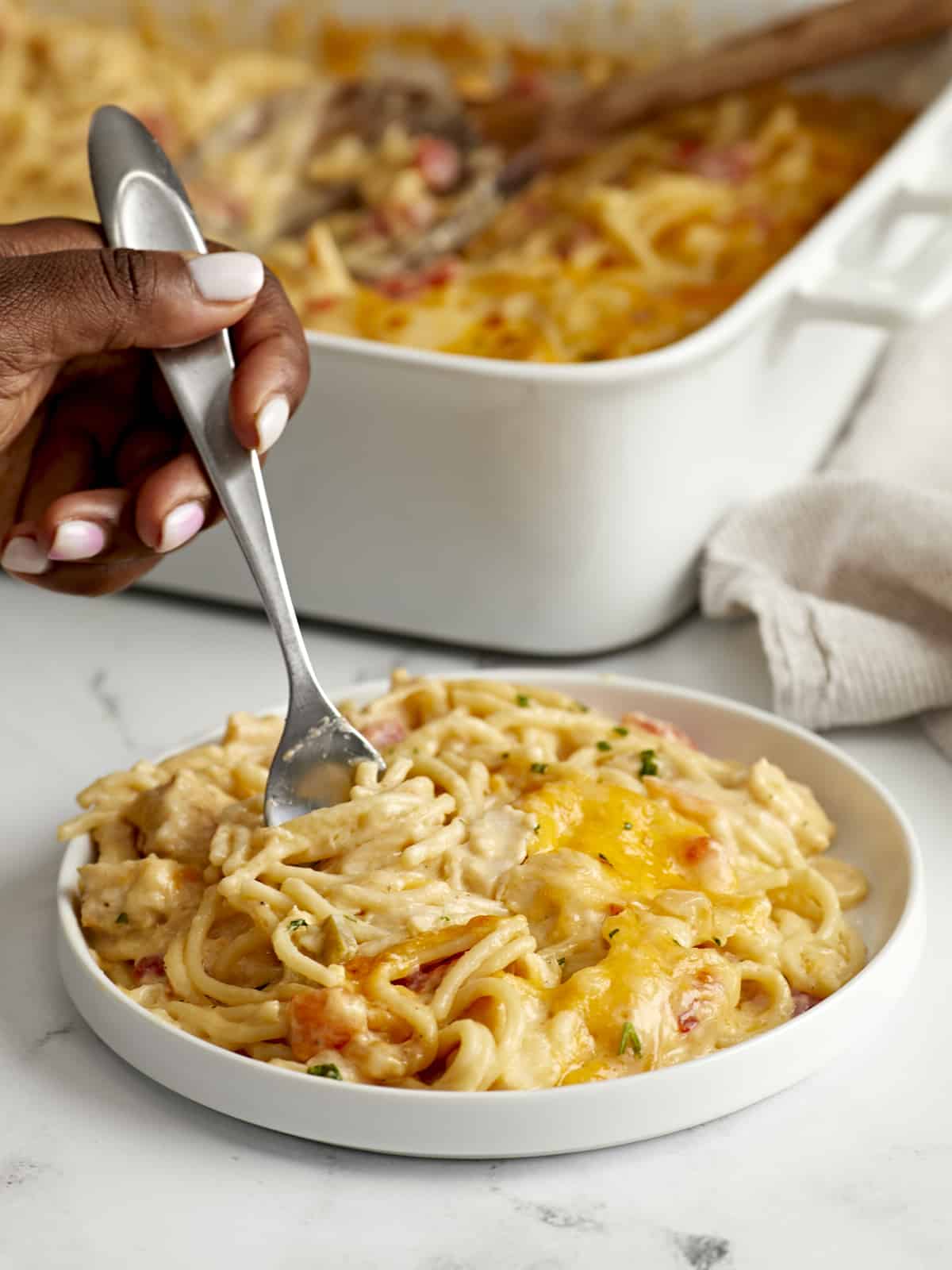
More Chicken Pasta Recipes
The post Chicken Spaghetti appeared first on Budget Bytes.

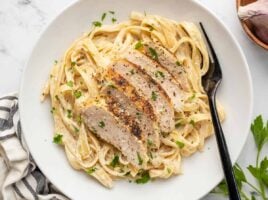

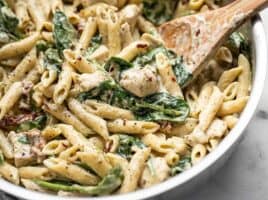
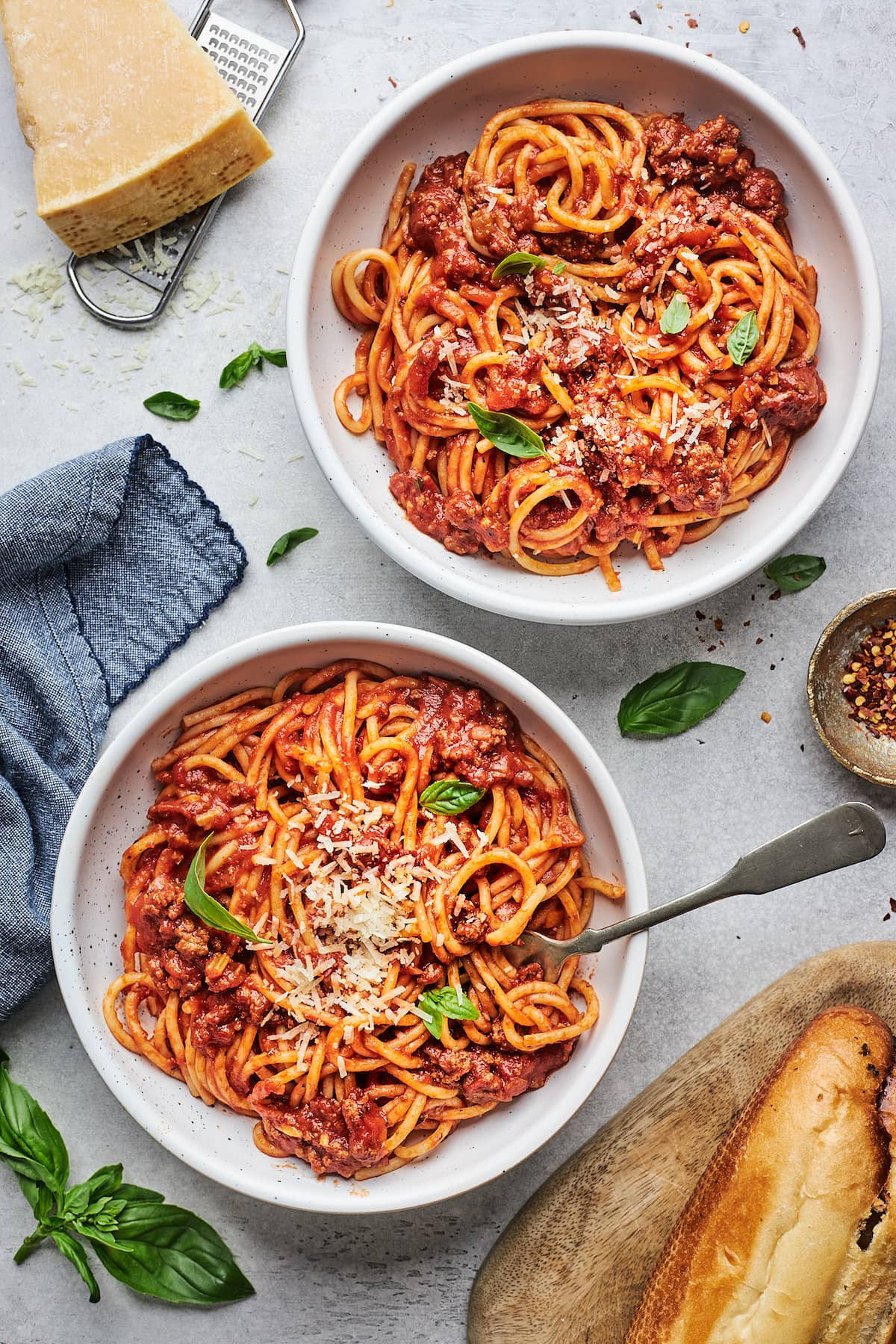 We love making spaghetti and meatballs, baked spaghetti, and lemon spaghetti, but classic Spaghetti with Meat Sauce is the BEST! It is a family dinner staple. I love this recipe because it’s made with basic ingredients that we always have in our pantry. Whenever we don’t know what to make for dinner, we often turn…
We love making spaghetti and meatballs, baked spaghetti, and lemon spaghetti, but classic Spaghetti with Meat Sauce is the BEST! It is a family dinner staple. I love this recipe because it’s made with basic ingredients that we always have in our pantry. Whenever we don’t know what to make for dinner, we often turn… 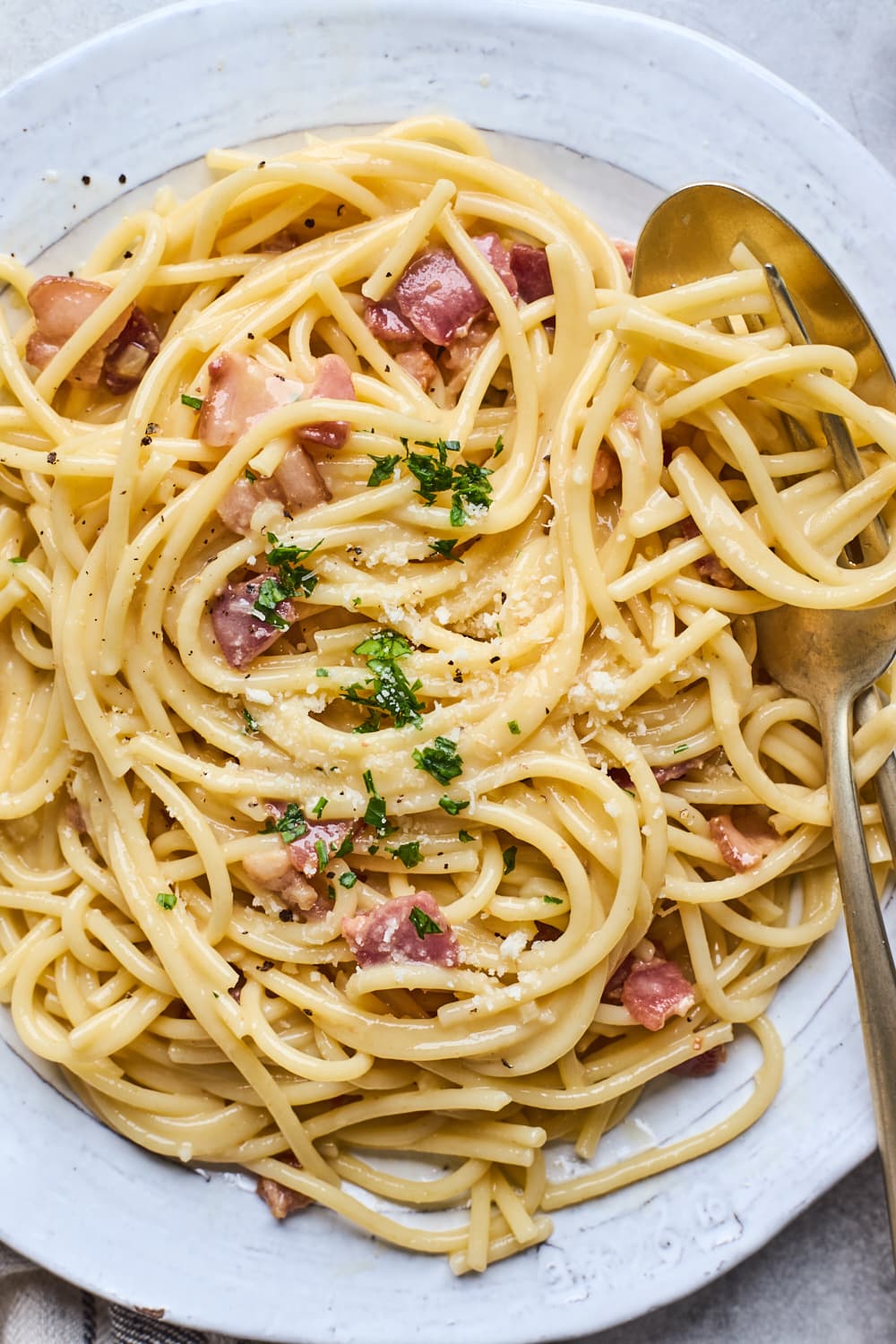 Spaghetti Carbonara is a classic Roman pasta dish that is easy to make and 100% indulgent. You only need 6-ingredients and 20 minutes, making it the perfect recipe for busy weeknights or easy entertaining. The ingredients are simple and we always have them on hand. Spaghetti (or your pasta of choice), bacon, eggs, Pecorino Romano…
Spaghetti Carbonara is a classic Roman pasta dish that is easy to make and 100% indulgent. You only need 6-ingredients and 20 minutes, making it the perfect recipe for busy weeknights or easy entertaining. The ingredients are simple and we always have them on hand. Spaghetti (or your pasta of choice), bacon, eggs, Pecorino Romano…